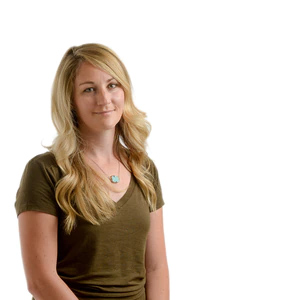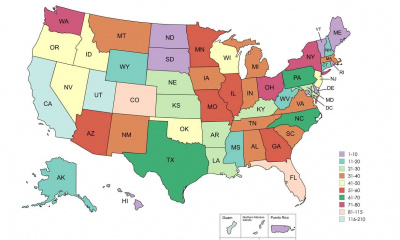The Northwestern Shoshone are prioritizing restoration of Battle Creek, which runs through one of the bloodiest sites in U.S. history.
Preston, Idaho • Steam rose from a sacred hot spring where it meets the slow-flowing Bear River, even on a warm sunny October afternoon with a hint of sulfur in the air.
The confluence of spring and river marks the spot where Shoshone families wintered for hundreds of years, shielded by bluffs and protected by the willows and cedars that once grew on embankments. The scorching-hot geothermal spring meant there was always flowing water, even in subzero temperatures. The vapor that wafted where it bubbled from the earth reminded them of their exhales, visible in the frigid air. They called the site “Sowo Gahni,” or “breath from lungs.”
“That’s what that water represents,” said Rios Pacheco, Northwestern Shoshone spiritual leader, “the breath of life.”
But on a cold and bloody day more than 150 years ago, many lives were lost at the site and a centuries-old tradition was shattered at what became known as the Bear River Massacre.
The event was so traumatic that the Shoshone abandoned the site, only occasionally gathering years later to mourn and remember. But in 2018, their descendants bought and reclaimed their old wintering grounds, including a portion where a stream now called “Battle Creek” flows through it. They’re at work transforming it into a place of environmental and cultural healing.
“We’re recognizing the water today and recognizing the water before,” Pacheco said during a tour of the property in northern Cache Valley, just over the Idaho border. “... Water can give you life. Water can take life. And we all know that.”
On Jan. 29, 1863, Pacheco recounted, a group of U.S. soldiers assembled in the river valley near where he stood. They gunned down and slaughtered hundreds of his ancestors in one of the largest slayings of Indigenous people in North American history.
Women and children hid among willow thickets in an effort to evade the attack, Pacheco said. Some drowned their own infants, afraid their wails would reveal their location. Other tribal members jumped into the freezing Bear River in an attempt to escape, knowing if they could make it to the warm mineral waters they might have a chance to survive.
But “this is not a place of mourning. It’s a place of revitalizing,” Pacheco said. “We’re going to revitalize the water. At the same time, we’re revitalizing our people.”
Wuda Ogwa marks a new chapter
As many as 200 to 500 Shoshone died at the Bear River site, according to various accounts, including at least 90 women and children. By comparison, about two dozen U.S. soldiers died. Historical recollections detail the sheer violence tribal members suffered at the hands of the military, including women who were raped and babies who had their heads bashed.
Clearly outgunned and horrifically brutalized, surviving Shoshone struggled for years to have the event renamed the Bear River Massacre rather than the “Battle of Bear River.” Still, whitewashed retellings and inaccuracies about the event persisted as recently as 2017, when the nearby town of Wellsville had a reckoning with offensive portrayals of native tribes during its annual Founders’ Day Sham Battle.
Now, with around 550 acres of their historical wintering grounds back in Shoshone hands, tribal leaders are thinking more about what the land represents and the name it should carry.
Before all the carnage, it was a place known for “games, gambling, gossip” over generations, recalled Brad Parry, vice-chair of the Northwestern Band of Shoshone Nation council. Tribal members traded salt from the Great Salt Lake, salmon from the Snake River, ducks and waterfowl harvested from wetlands and seeds collected from the desert. They had children there, found their spouses there, made new friends there.
“The whole story of that place changed within four hours,” Parry said. “We want to take that back.”
They started calling the site “Boa Ogoi,” but have recently settled on the name “Wuda Ogwa.”
“‘Boa Ogoi’ is more of a spiritual feeling” that tribal elders felt too sacred for advertising and promotion, Parry said, since the Shoshone intend to one day build an educational center there. “We chose ‘Wuda Ogwa,’ which means ‘Bear River’ — a literal translation.”
An impaired river’s history
The Bear River, however, has changed dramatically from what Parry’s ancestors would have recognized.
It’s still the largest and most important tributary flowing to the imperiled Great Salt Lake, but arguably one of the most altered. Its oxbows have been straightened, its channel eroded, its banks choked with invasive species.
At one point, the Bear River is diverted out of its bed entirely, sent down a canal, and dumped into Bear Lake, then pumped back out again in order to generate hydropower and control seasonal flooding. Sections of the river are squeezed into aqueducts, stored in reservoirs and used to irrigate around half a million acres of farmland in three states.
In recent years, the river has also stopped flowing to the shriveling Great Salt Lake during the spring and summer, over tapped by consumption, climate change and drought.
And the Bear River’s own tributaries have been dammed, diverted and converted into ditches. The grizzly bears, bison and beaver the river’s watershed used to sustain are largely gone.
“We’re putting undue pressure on Mother Nature,” Parry said, “and we’re starting to reap those consequences.”
Regulators have deemed the Bear River and some of its streams impaired waterbodies under the Clean Water Act due to sediment loads, pollutants and water temperatures too warm for fish.
That’s why Shoshone leaders have made restoring Battle Creek’s confluence with the Bear River one of their top priorities at Wuda Ogwa.
Healing a landscape while adapting to a changing world
Over time, the Wuda Ogwa got parceled off into farms, fields and homesteads. Its tragic story largely disappeared into the reshaped terrain.
Battle Creek was once called “Beaver Creek” by settlers. But by the time of the Bear River Massacre, all the beaver had likely been “trapped out” by fur traders, Parry said, so he’s not surprised it got renamed.
Farmers moved the creek into an earthen ditch that runs parallel to U.S. Highway 91, which caused it to collect a lot of silt and nutrients that now dump into the Bear River.
“You totally change the landscape when you bring in livestock,” Parry said, “and plant the same crop over and over.”
Water-sucking invasive Russian olive began springing up in the watershed, further degrading water quality and wildlife habitat.
This year, the Northwestern Band of Shoshone received a $2 million grant from the U.S. Bureau of Reclamation to restore Battle Creek. The plan is to free the stream, allowing it to braid and meander across Wuda Ogwa. Tribal members and recruited help will recreate the dams beaver would have built.
“It’s always better if the beaver can do it,” Parry said, adding he’s already spotted a few returning to Battle Creek, “but this is to get them started.”
The resulting ponds and active flood plain will allow silty water to settle, clear and, in turn, help heal the Bear River.
Other partners in the project include Trout Unlimited, Sageland Collaborative, Utah Nature Conservancy, Utah State University, Sagebrush Steppe Land Trust, PacifiCorp and the U.S. Fish and Wildlife Service.
They’re already at work removing invasive olives and thistle and intend to establish native riparian plants, like peach tree willows, cottonwoods, chokecherry and sumac.
“The importance is the diversity,” said Darren Olsen, a hydrologist contracted to help with the effort. “... That will make it more resilient to climate change.”
Parry said his family knows about adapting to a changing world — it’s how his ancestors survived for millennia in the Great Basin and the whims of its arid climate, and it’s how his relatives integrated with encroaching Mormon pioneer settlers, eventually converting to their religion and becoming revered members of their community.
And now that they have ownership of Wuda Ogwa, the Shoshone get to change the landscape back to something their relatives would have known before all the damage was done.
“All of us, and my family members, we’re still processing” what happened there, Parry said. “What we’ve learned throughout life is it helps to talk about your trauma. ... Now we’re fighting to make sure our story is told, and that people understand the correct story.”
Utah Public Radio News Director Sheri Quinn contributed to this story.





